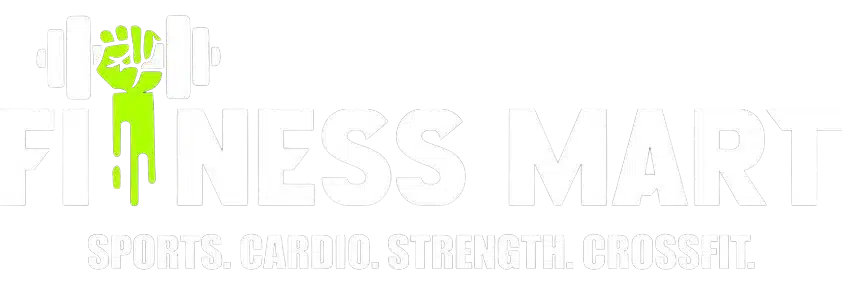No products in the cart.
Resistance Band Exercises Leave a comment
Ten Resistance Band Exercises to Perform at Home
People frequently believe that hefty dumbbells or costly gym equipment are necessary for at-home workouts in order to stay in shape. However, that is not at all the case. From the comfort of your living room, a resistance band can provide a full-body workout that targets all of the major muscle groups. Resistance bands are an essential tool for anyone beginning their fitness journey or experienced athletes seeking to add variation to their regimen.
These elastic, flexible bands are ideal for at-home exercises, vacation, or even office fitness breaks because they are highly portable and come in a variety of resistance levels. Ten efficient resistance band workouts that you can perform at home are listed in this article, along with advice on how to get the most out of them.
Why Use Resistance Bands?
• Low Impact: Easy on joints, excellent for preventing and recovering from injuries.
• Versatility: You can train practically every muscle area with them.
• Progressive Resistance: This type of resistance ranges from low to high.
• Reasonably priced: less expensive than machines or dumbbells.
• Space-efficient: Easily fits in a workout bag or drawer.
1. Resistance Band Squats
Target muscles include the quadriceps, hamstrings, glutes, and core.
Directions:
- Place your feet shoulder-width apart and step in the middle of the band.
- Keep the band’s two ends at shoulder height.
- Drop into a squat with your knees over your toes and your chest raised.
- Get back up on your feet by pushing through your heels.
Benefits: Enhances posture and increases leg strength. Weights are not necessary to increase intensity with the resistance band.
2. Resistance Band Chest Press
Target Body Parts: Shoulders, triceps, and chest.
Directions:
1. Use a wall anchor or door handle to secure the band behind your back.
2. Raise both ends of your hands to your chest.
3. Push forward until your arms reach their maximum length, then pull back.
Reasons for Needing It: Without using a barbell, it improves your upper body and chest and simulates the bench press.
3. Resistance Band Seated Row
Target Areas: shoulders, biceps, and upper back
Directions:
1.Loop the band around your feet while sitting on the floor with your legs outstretched.
2. Using straight arms, grasp both ends of the band.
3. Squeeze the shoulder blades together as you draw the band toward your waist.
4. Let go gradually to come back.
Fitness Tip: Avoid bending back and maintain a straight spine. It helps in back muscle separation.
4. Resistance Band Deadlifts
Target Areas: lower back, hamstrings, and glutes.
Directions:
1.Place your feet hip-width apart while standing on the band.
2. With your arms out in front of you, hold the ends.
3. To stretch the band and lower your torso, hinge at the hips.
4. Push your hips forward to stand again.
The Reason It Works An excellent compound motion that works the backbone. Perfect for all levels of fitness and safe for use at home.
5. Resistance Band Bicep Curls
Biceps are the target areas.
Directions:
- Place your feet shoulder-width apart while standing on the band.
- Hold both ends in a forward-facing palm grip.
- Keep your elbows close as you curl your arms toward your shoulders.
- Less control over the arms.
Extra Tip: For optimal muscle activation, concentrate on a gradual, steady curl rather than rocking your body.
6. Resistance Band Tricep Kickbacks
Target Areas: Triceps (back of upper arms)
Instructions:
- Anchor the band under your foot or a low surface.
- Hold the band with your elbow bent, upper arm parallel to your body.
- Extend your arm fully behind you, then return.
Best For: Toning the arms and increasing upper body endurance. Excellent for people with limited space or equipment.
7. Resistance Band Lateral Walk
Target Areas: Hip stabilizers, glutes, and outer thighs.
Directions:
1. Encircle your ankles or thighs with a loop band.
2. Take tiny sideways steps and kneel a little.
3. Go in one way for ten steps, then turn around.
Reasons to Love It: aids in strengthening and activating muscles that are frequently overlooked during conventional exercise. Excellent for preventing injuries.
8. Resistance Band Shoulder Press
Target Areas: Upper traps and shoulders.
Directions:
1. Hold the grips at shoulder height while standing on the band.
2. Raise your arms above your head until they are completely extended.
3. Slowly lower the arms to their initial position.
Use your core to stabilize and maintain a neutral lower back.
9. Resistance Band Bicycle Crunches
Target Areas: lower abs, obliques, and core.
Directions:
1. Loop a band around your feet while lying on your back.
2. Second put your hands behind your head.
3. Raise your head and shoulders while switching sides and bringing your right elbow to your left knee.
Pro Tip: Maintain control of the movement. This works better than a standard crunch since the band creates additional stress in your lower body.
10. Resistance Band Glute Bridges
Target Body Parts: Hamstrings, lower back, and glutes.
Directions:
1. Lay flat on your back with your feet flat and your knees bent.
2. Position a band of resistance over your knees.
3. Raise your hips while extending your knees a little.
4. Lower after two seconds of holding at the peak.
The Reason It Works Excellent for strengthening the lower body and engaging the glutes, particularly if you spend a lot of time sitting down.
Bonus Tips for Resistance Band Workouts
To truly make the most of your resistance band workouts at home, keep the following tips in mind:
1. Maintain Proper Form
Using incorrect form can lead to injuries. Make sure your posture is aligned and movements are controlled.
2. Start Light
If you’re new to bands, begin with light resistance. Progress to heavier bands as your strength improves.
3. Increase Reps or Sets
Since bands offer variable resistance, you can intensify your workout by increasing reps, time under tension, or sets.
4. Combine with Bodyweight
Use resistance bands along with bodyweight movements like planks, lunges, and push-ups for full-body engagement.
5. Warm-Up and Cool Down
Include stretching and light cardio before your workout and cool down afterward to avoid soreness and improve flexibility.
Weekly Resistance Band Workout Plan
Here’s a sample 3-day plan you can follow using only a resistance band:
Day 1: Lower Body Focus
- Resistance Band Squats – 3 sets of 12 reps
- Lateral Walks – 2 sets of 10 steps each side
- Glute Bridges – 3 sets of 15 reps
- Deadlifts – 3 sets of 10 reps
Day 2: Upper Body Focus
- Shoulder Press – 3 sets of 10 reps
- Bicep Curls – 3 sets of 12 reps
- Tricep Kickbacks – 3 sets of 12 reps
- Chest Press – 3 sets of 10 reps
Day 3: Core & Cardio
- Bicycle Crunches – 3 sets of 20 (10 each side)
- Plank with Band Pulls – 2 sets of 30 seconds
- Seated Rows – 3 sets of 12 reps
- High Knees with Band – 2 rounds of 30 seconds
Repeat this plan every week with rest days in between, and modify based on your fitness level.
Final Thoughts
A resistance band is a simple yet powerful tool that can transform your home workout routine. Whether you’re aiming to tone your muscles, build strength, or increase flexibility, these ten exercises offer a balanced approach to full-body training. You don’t need a gym membership or expensive equipment—just dedication and a small investment in your health.
By incorporating resistance bands into your daily life, you can stay fit, boost your confidence, and maintain a consistent fitness routine no matter where you are.
FAQs
Q1: Can I gain muscle using resistance bands only?
Yes. With proper form, progressive overload, and consistency, resistance bands can help build and maintain muscle.
Q2: Are resistance bands good for beginners?
Absolutely! They are especially useful for beginners as they offer control, safety, and variable resistance.
Q3: How do I choose the right resistance level?
Bands come in light, medium, heavy, and extra-heavy. Start light, then gradually move to higher resistance as your strength improves.
Q4: Can resistance bands replace dumbbells?
For many exercises, yes. While they don’t build absolute strength like heavyweights, they’re excellent for endurance, toning, and muscle control.
Q5: How often should I use resistance bands?
3–5 times a week is ideal, depending on your fitness goals and recovery time.



























